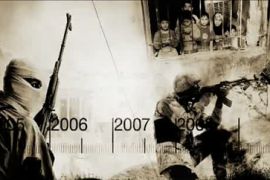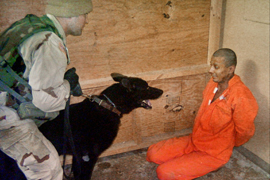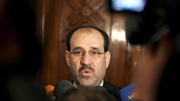
War Without End
A special year by year analysis of the major events of the war in Iraq.
|
|
On May 1, 2003 George Bush, the US president, gave a speech on the aircraft carrier USS Abraham Lincoln declaring an “end to major combat operations” in Iraq.
Five years on, with violence continuing unabated across the country, Al Jazeera’s Hoda Abdel Hamid looks at the major events of the Iraq war.
Each episode in this special six-part series will focus on one of the last five years – looking at the events, policies and people that helped to shape Iraq and its current chaos.
As well as speaking to top policy makers from the US and UK, along with their senior Iraqi advisors, War Without End hears from ordinary Iraqis and US soldiers.
| 2008 |
Iraqis welcomed 2008 with cautious optimism. The troop ‘surge’ had contributed to diffusing some of the sectarian tensions in Baghdad but the lack of political progress meant that security gains remained fragile and reversible.
On the very first day of the year, they were put to the test when a suicide bomber blew himself up at a funeral in Baghdad, killing 30 people. It was the worst attack in months.
Violence was down from the previous year, but still at the levels of 2005 when there were as many as 100 attacks a day.
Even so, for residents of the capital it was an improvement even though living conditions remained poor.
| 2007 |
| Mouwaffak al-Rubaie | ||
|
The US announces that an additional 20,000 troops will be sent to Iraq as part of its ‘troop surge’.
The Iraqi military is now taking a bigger role in trying to control the country, while US forces try to weed out insurgents from Baghdad – evidence indicates that those who leave set up camp elsewhere.
As election year approaches in the US, the Bush administration turns its focus to domestic issues but the war in Iraq remains an important concern for voters. All presidential candidates propose an exit strategy.
US envoys join Iran and Syria for talks in Baghdad.
Violence appears to have eased and the fear of an all-out civil war no longer looms ominously, but what has the war accomplished? A country and a people torn apart.
Watch part one of War Without End: 2007
Watch part two of War Without End: 2007
| 2006 |
| In video |
A bomb attack on the golden dome of the al Askari mosque in the city of Samarra, one of the holiest shrines in Shia Islam, was the clearest sign that sectarian violence had not been reduced by elections.
The US increasingly tried to extract itself from the day-to-day administration of the country and president Jalal Talibani formed a government with the new prime minister Nuri al-Maliki.
The US also handed over some military control to the Iraqi navy and air force.
Meanwhile, an American air strike on what was believed to be an al-Qaeda stronghold killed the organisation’s leader in Iraq, Abu Musab al Zarqawi.
In the US, the Baker Commission recommended major policy change from the government, not only saying that a troop surge would be a mistake but also that the US should engage with long-time foes, Iran and Syria.
The very last day of 2006 saw the execution of the country’s former leader, Saddam Hussein.
| 2005 |
 |
In early January US personnel accused of abuses at Abu Ghraib prison are found guilty, but many Iraqis were to remain sceptical of American justice.
The country’s first multi-party elections in 50 years saw a surprisingly high turnout, especially in Kurdish and Shia areas. The polls were hailed as a great boost for US efforsts to democratise Iraq.
However there was a surge of violence following the election that was to continue throughout the year. By mid-July about 25,000 Iraqis were estimated to have been killed since the start of the war in 2003.
People returned to the polls again to vote in a referendum on Iraq’s constitution and in parliamentary elections.
Meanwhile Saddam Hussein and his senior officials went on trial in Baghdad.
Watch part one of War Without End: 2005
Watch part two of War Without End: 2005
| 2004 |
 |
The year saw more and more sectarian attacks with each group blaming the other for the escalating violence. Coalition forces came under increased attacks by so-called insurgents but the policies remained the same.
The battle for hearts and minds was clearly being lost as US patrols often burst into people’s houses in the middle of the night and photos detailing abuse of Iraqis held in Abu Ghraib prison were made public.
Meanwhile there was a long and bloody siege of Fallujah and there were clear indications the war was far from over.
The symbolic gesture of handing power to an interim Iraqi government does little to quell the ever increasing fighting.
Watch part one of War Without End: 2004
Watch part two of War Without End: 2004
| 2003 |
| Paul Bremer |
|
|
The lack of a plan for restructuring Iraq and moving the country forward after the invasion helped to shape events in 2003.
Policies were put in place that contributed to creating a divide between the various sectarian groups within the country.
The violence escalated and started to take on sectarian overtones as the year went on.
The year ended with the capture of Saddam Hussein, the former Iraqi leader, who was found in a spider hole near his home town of Tikrit.
The US-led coalition were hoping that this would bring an end to much of the violence but it had no effect whatsoever.
Watch part one of War Without End: 2003 on YouTube
Watch part two of War Without End: 2003 on YouTube
To contact us click on ‘Send your feedback’ at the top of the page
Watch Al Jazeera English programmes on YouTube
Join our debates on the Your Views page



